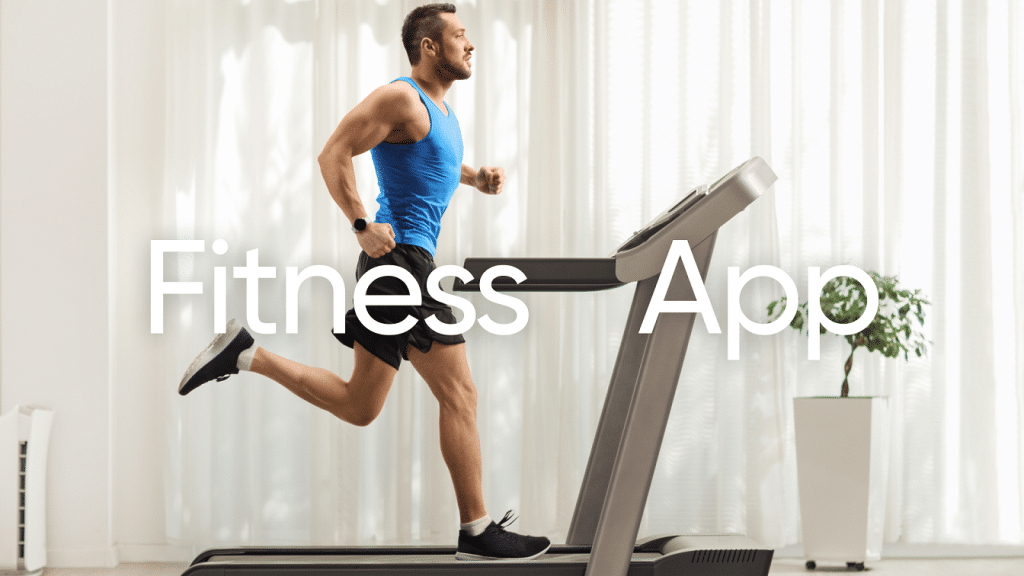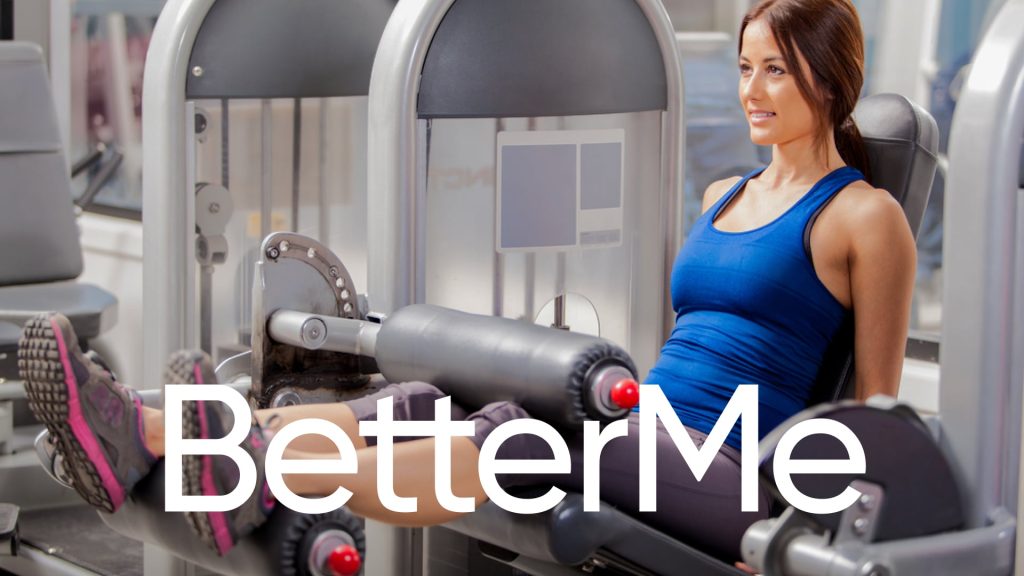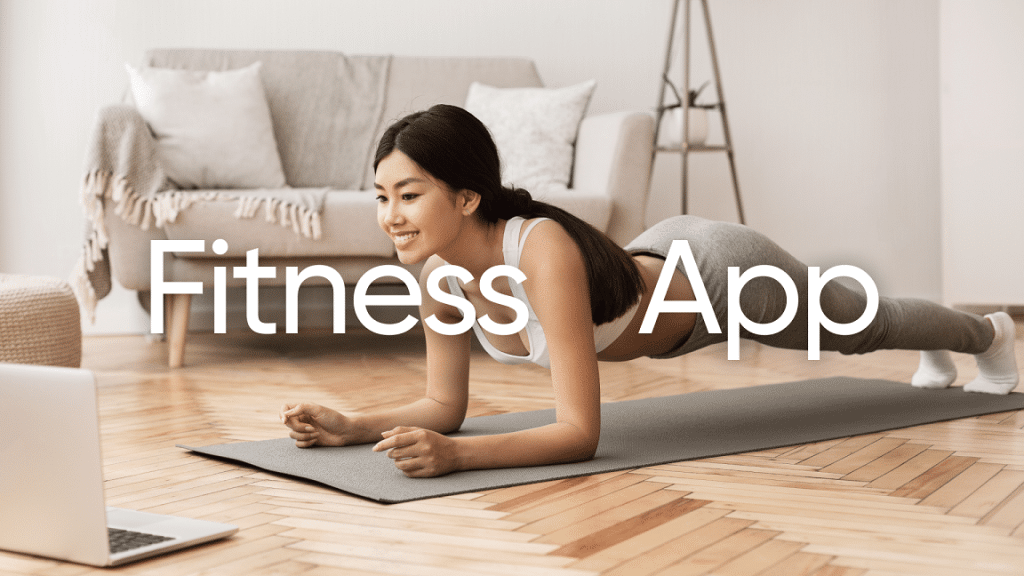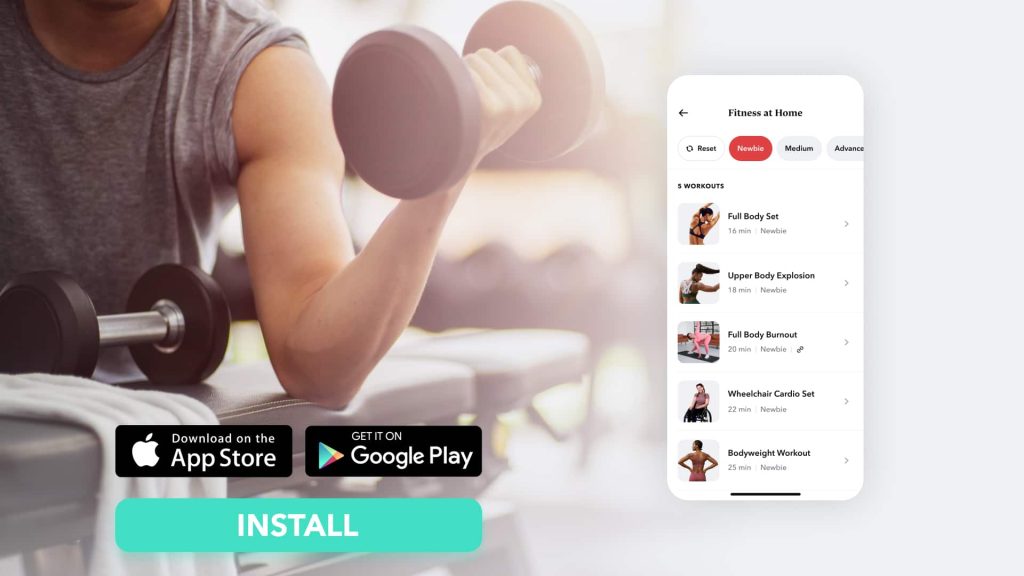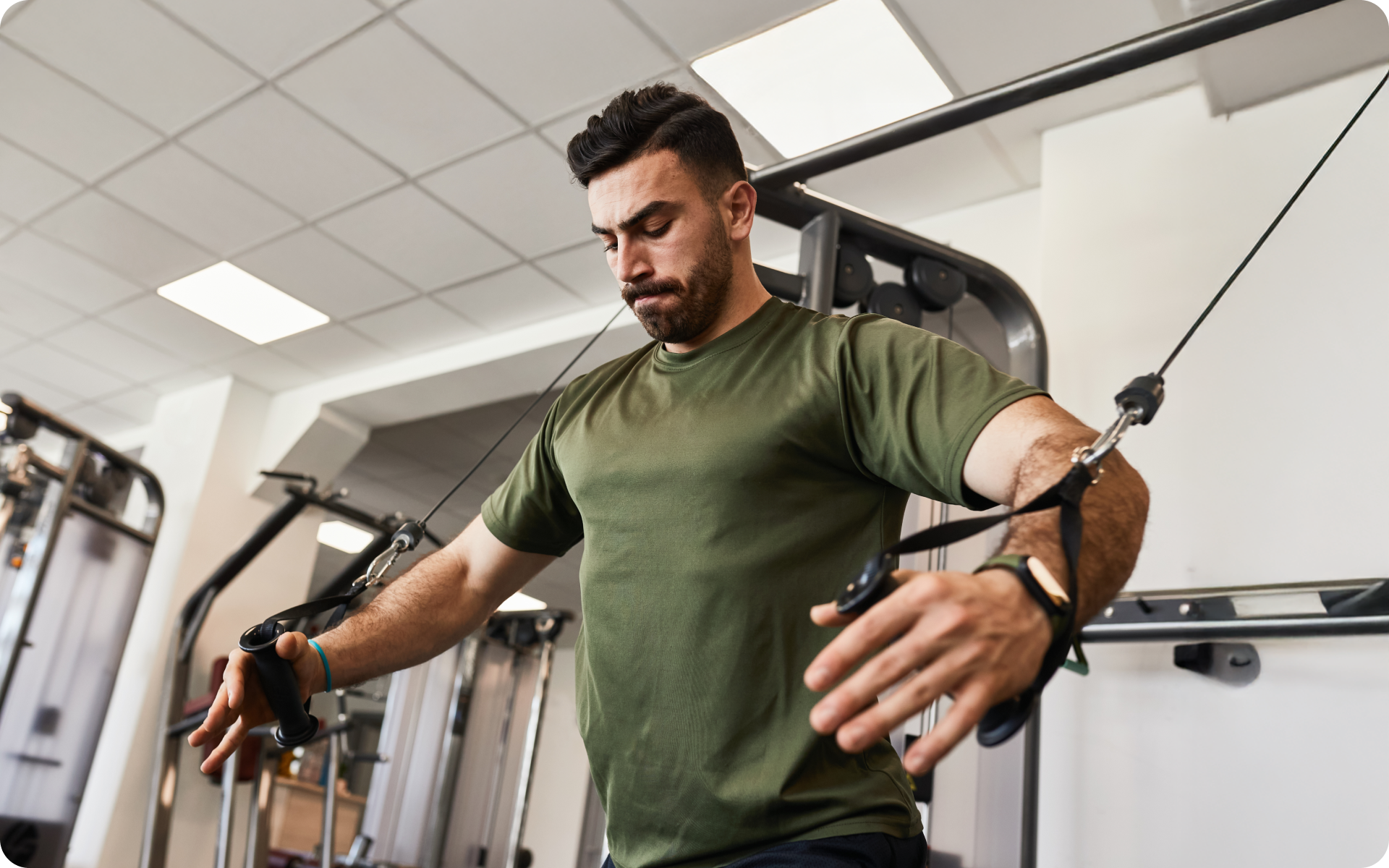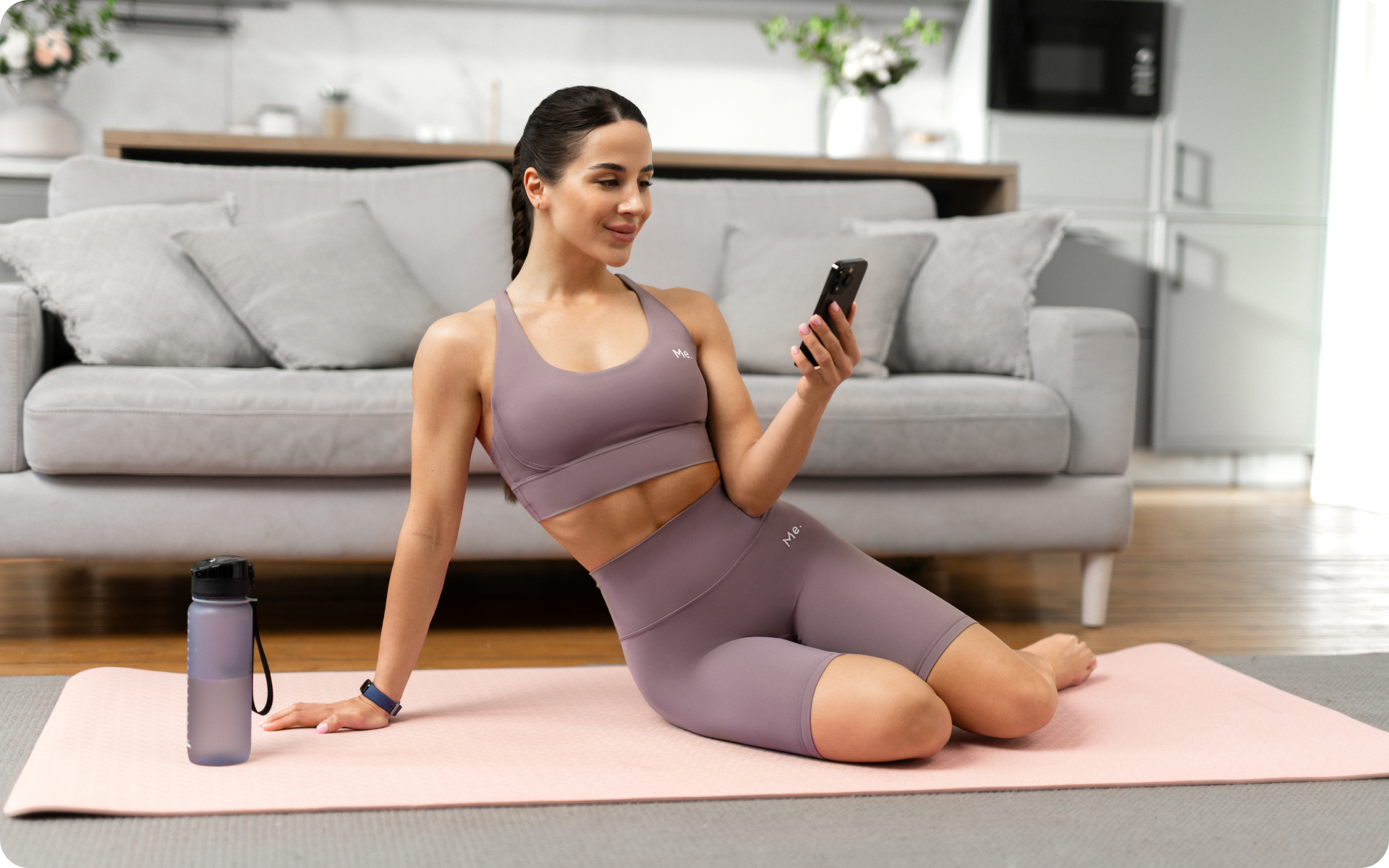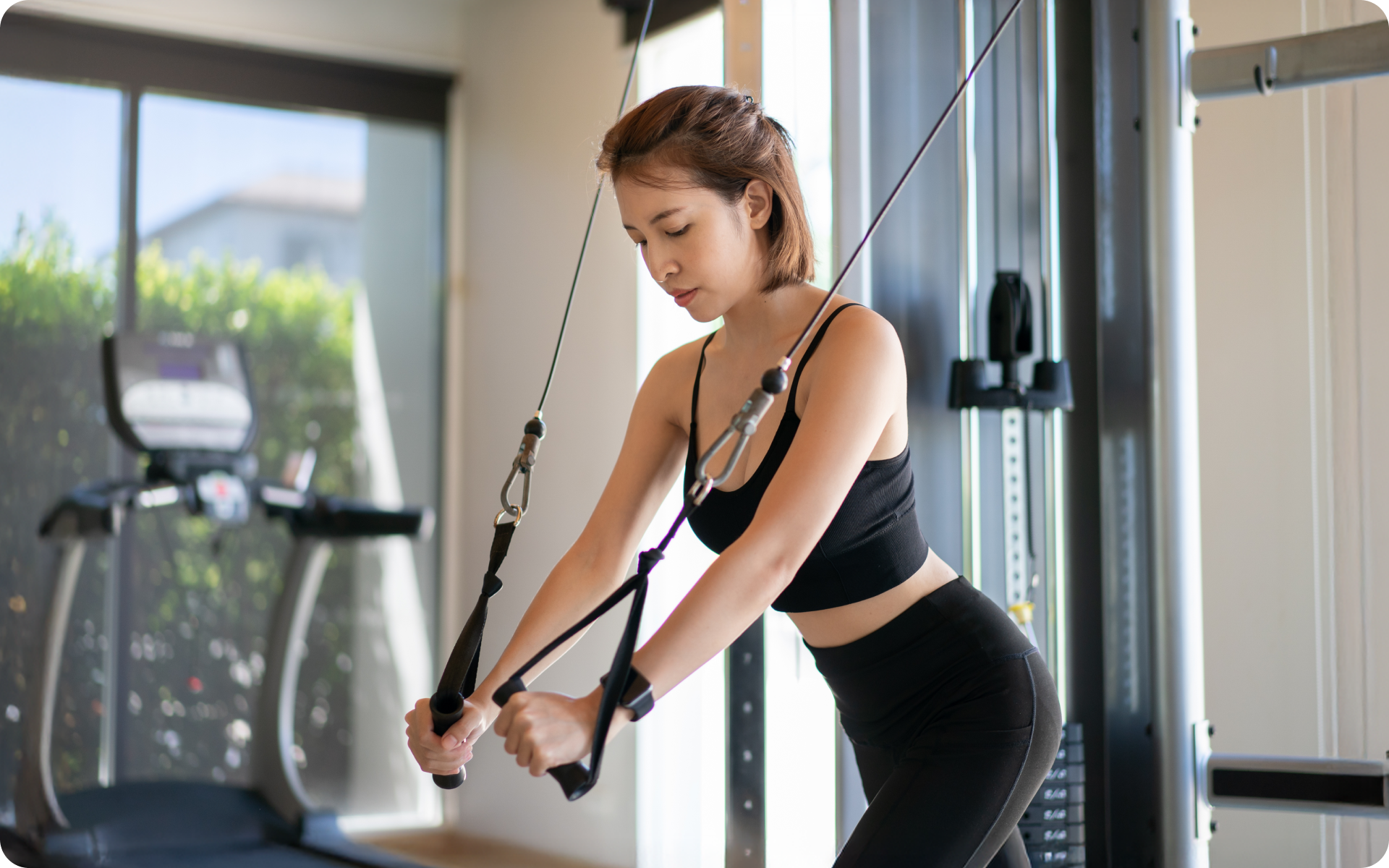Starting a fitness program may be one of the best things you can do for your health. Physical activity can reduce your risk of chronic disease, improve your balance and coordination, help you lose weight — and even improve your sleep habits and self-esteem.
However, starting a workout routine is sometimes easier said than done. It can be hard to keep up your dedication to the gym or a training routine when your schedule is overloaded with a million other things from work to household responsibilities to travel and social engagements.
The good news is you’re not alone – many beginners struggle to get started. In this article, you’ll find everything you need to know before getting started on your fitness journey. You’ll also find inspiration for creating a 4 week beginner workout plan.
The Best Beginner Workout Routine
If you haven’t worked out in a while, or never picked up a dumbbell before in your life, you need to put some thought into which routine you choose to start with. It’s best to start slow, progress steadily, and add more sets to strength exercises or more duration to your cardio workouts whenever you feel comfortable.
Experts recommend following the F.I.T.T principle to set up a complete workout program. The program comprises four elements (6):
Frequency
How often you exercise should be based on your experience level. Someone who is just getting started should aim for three days of cardio and three days of strength training a week. Over time, you can add more frequency to your cardio workouts as you build endurance and get more comfortable with exercise (2).
Read More: Why Is It Important To Ease Into An Exercise Program: Expert’s Take On No-Rush Beginner Workouts
Intensity
At the beginning, you should focus on cardio workouts at a moderate intensity. Rate your effort level between levels 5 and 6 of a 10-point perceived exertion scale (2). As you advance, gradually change up intensities with interval training.
Time
The length of your workouts should vary depending on whether you’re performing cardiovascular or strength training exercises. Beginners are only advised to perform cardio exercises for 20-25 minutes. Each week, an extra 3-5 minutes can be added to the workout (2).
Beginner strength training exercises should be performed in at least 3 sets of 8-12 reps. Depending on how long you rest between sets, your strength training session can take anywhere between 30-45 minutes (2). An extra set can be added each week, depending on your fitness level.
Type
The type of exercise can be stationary cycling, running, or walking. Different exercises will use different muscles and keep both your body and mind engaged. Once you establish an exercise habit, consider trying a variety of activities to keep things interesting.
The 4-Week Beginner Workout Program
The primary focus of the 4 week beginner workout routine is to slowly build your body up to be able to take on more challenging workout routines. To achieve that goal, this workout will (3):
- Improve and increase your joints’ range of motion
- Improve your joints’ stability
- Strengthen your core muscles
- Develop a consistent level of cardio
Directions
Perform three bodyweight strength workouts per week and two cardio workouts per week including a minimum of three mobility/range of motion routines per week. For example – warm up with a mobility routine, perform a bodyweight strength workout, and finish with cardio.
After four weeks, redo this plan but add some extra sets per exercise and at least 15 minutes of cardio into each session.
Exercises
Here are some exercises you can choose to include into your 4 week beginner workout routine weight loss. You can change the order of exercises, but maintain the frequency and intensity suggested in the directions above.
If you wish to free yourself from all the extra pounds that have been weighing you down for way too long, start using the BetterMe app and overhaul your entire life!
Warm-Up
Mobility/range of motion exercises are important for both your physical and mental health (5). A little extra time to stretch can help you relieve stress, improve the quality of your workout, and stay injury-free. Some warm-up mobility moves are:
- Shoulder rotations
- Elbow bends
- Hip and knee bends
- Leg lifts
You can also consider these warm-up stretches:
- Open lizard
- Standing quad stretch
- Hamstring stretch
Cardio
At the gym, use the treadmill or elliptical – start out at a moderate incline for 15-20 minutes to prepare your muscles for the workout. If you’re at home, you can go on a 20 minute brisk walk or jog (2). In the house you can do any 10-15 minutes of these exercises:
- Shoulder circles
- Jumping jacks
- High knees
- Jump rope
- Butt kicks
- Lateral shuffles
- Dancing to music
Bodyweight Strength Workout
Here are some of the easiest beginner workouts to get started with. Bodyweight exercises don’t require equipment, giving you time to master your form and build endurance before going on a 4-week beginner weight lifting workout.
- Pushups (3 sets, 90 seconds each, with 60 seconds rest in between sets) – works your triceps, chest, anterior deltoids (front shoulder).
- Plank (3 sets, 60 seconds each, with 30 seconds rest in between sets) – works your core, arms, quads, abs, posterior chain (back), glutes.
- Glute bridge (3 sets, 10 reps each with 60 seconds rest in between sets) – works your glutes, hamstrings, hip flexors.
- Superman (3 sets, 60 seconds each with 60 seconds rest in between sets) – works your back, shoulders, glutes, core, hamstrings.
- Bodyweight forward or reverse lunge (3 sets, 5 reps per leg with 60 seconds rest in between sets) – works your glutes, hips, quads, hamstrings.
- Bodyweight squats (3 sets, 90 seconds each with 60 seconds rest in between sets) – works core, glutes, hips, quads, hamstrings, calves.
Read More: 4-Day Workout Routine For Lean Muscle – Simple Bodybuilding Guide For Beginners
Tips To Get You Started
You’ve decided that it’s time to start working out, but now you might be wondering: how should I work out? How long can I workout for? When is it okay to take a break or modify my plan? Here are a few tips that will come in handy:
Assess Your Fitness Level
If you’re just starting out with your fitness journey, chances are you don’t want to shock your body too much and end up hurting yourself. Be sure to choose exercises that challenge you, but aren’t too difficult for a beginner. If you already exercise regularly, then aim for intensity rather than variety—focus on getting stronger by lifting heavier weights or push-ups or squats (4).
Create A Balanced Routine
Everyone is different and has different schedules, so it takes some time to find what works best for you in terms of working out. Some people work better with the early bird routine (before work), while others prefer going after work. Some love lifting weights at the gym, others would rather dance to their favorite music, and some prefer doing yoga or pilates. Figure out what works for you so that you can get started without any setbacks.
Start Slow And Progress Slowly
While it’s great to dream about running a marathon in a couple of months, it takes time to build up the strength for that kind of physical activity—it might be best to start with something smaller at first for your own good (4). If you want to become a runner, start with short walks and stretches until you are ready for more strenuous workouts. You should also master the basics before going harder on weights or cardio equipment.
Allow Time For Recovery
Our bodies need time to recover after working out because we wear down muscles during exercise and they need time to repair themselves. It is best to give yourself at least 48 hours of recovery time after a strenuous workout, so your muscles can rebuild stronger than they were before (1).
Listen To Your Body
The most important thing you could do when it comes to working out is listening to what your body tells you. If you’re feeling tired and lethargic, take the day off or opt for a lighter workout (4). Just because the rest of the world is going to the gym 5 times a week doesn’t mean that we should all follow suit – your body needs routine and rhythm just like everything else in life, but nothing says that ‘routine’ has to be every single day.
When In Doubt, Take A Rest
Remember that your health and fitness is a marathon, not a sprint. Keep an eye on how you feel (and look) and take care of yourself. You should never wait until you’re sick or injured to pay attention to your body—its signal will always be there if only we would stop and listen (4). The most important thing about exercising is making it as enjoyable as possible. If something feels like too much work, then maybe it isn’t for you that day—give yourself a break, go for a walk in the park instead!
Yanking yourself back in shape has never been so easy with our game-changing fitness app! Start transforming your life with BetterMe!
How To Avoid Burnout And Injury
Many people start working out after being sedentary for a number of years because they want to experience the benefits of exercise. This can be a bit too much all at once, and it could lead to injury or burnout – some people just don’t have the patience to stick with exercise for very long! Here are some tips that will help you avoid any pitfalls:
Have Compulsory Recovery Days
We talked about why everyone is different in terms of scheduling their workouts, but not every workout plan has to be adhered to religiously. If you work out 7 days a week and feel like your body needs rest, then take one day off. It doesn’t matter how many times per week you decide on doing something physical—the important thing is sticking with it.
Change Your Diet
You might think that working out will compensate for all the junk food you’ve been eating, but that’s just not true. Working out and diet go hand in hand – the healthier your diet is, the more your body will benefit from exercise.
Research shows that in order to fuel your workouts properly, you need to eat the right foods such as (7):
- Lean meats
- Complex carbs
- Healthy fats
- Colorful fruits and vegetables
Get Enough Sleep
It might be difficult at first to get used to sleeping well, especially if you are used to staying up late and reading a book or watching TV before bed. However, several studies have shown that sleep is crucial to fat loss and muscle building because it allows our bodies to repair itself after a strenuous workout (8). Aim for 7-8 hours per night if possible—you won’t regret it in the morning!
Use Proper Form
When it comes to lifting weights and doing cardio at the gym, use proper form to avoid injury and maximize your workout. This means not only using the right weight or level of resistance, but also taking care of your body when doing any kind of exercise. It also means warming up properly before lifting weights and cooling down afterwards.
Using proper form is important because it:
- Works the proper muscle groups
- Helps you enjoy the workout pain-free
- Stabilizes your spine and core
- Protects your joints
The Bottom Line
At the end of the day, you want to build a routine based on what you can commit to doing and stick to that commitment. If you’re pressed for time, but only have 15 minutes, feel free to do your cardio first, or push it back until later. You may find that taking even shorter breaks will help you get through your routine more quickly, and you can do a shorter version of the workout or stick to bodyweight exercises. But no matter where you are in your fitness journey, always remember that it’s better to take 2-minute breaks, than none at all.
Get your personalized
meal plan!
DISCLAIMER:
This article is intended for general informational purposes only and does not address individual circumstances. It is not a substitute for professional advice or help and should not be relied on to make decisions of any kind. Any action you take upon the information presented in this article is strictly at your own risk and responsibility!
SOURCES:
- 48-hour recovery of biochemical parameters and physical performance after two modalities of CrossFit workouts (2019, nih.gov)
- Does Aerobic Exercise and the FITT Principle Fit into Stroke Recovery? (2016, nih.gov)
- Exercise and Physical Fitness (n.d., medlineplus.gov)
- Fitness program: 5 steps to get started (2019, mayoclinic.org)
- Four-week dynamic stretching warm-up intervention elicits longer-term performance benefits (2008, pubmed.gov)
- Quantity and Quality of Exercise for Developing and Maintaining Cardiorespiratory, Musculoskeletal, and Neuromotor Fitness in Apparently Healthy Adults (2011, lww.com)
- The best foods to fuel a workout (2017, mayoclinic.org)
- Weight Loss and Sleep (2020, sleepfoundation.org)


